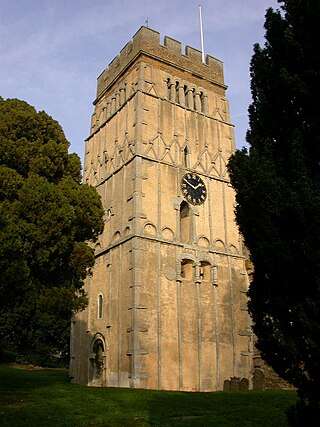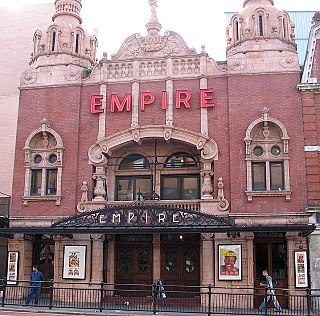
The Savoy Theatre is a West End theatre in the Strand in the City of Westminster, London, England. The theatre was designed by C. J. Phipps for Richard D'Oyly Carte and opened on 10 October 1881 on a site previously occupied by the Savoy Palace. Its intended purpose was to showcase the popular series of comic operas of Gilbert and Sullivan, which became known as the Savoy operas.

Halifax is a British banking brand operating as a trading division of Bank of Scotland, itself a wholly owned subsidiary of Lloyds Banking Group.

Sadler's Wells Theatre is a London performing arts venue, located in Rosebery Avenue, Islington. The present-day theatre is the sixth on the site. Sadler's Wells grew out of a late 17th-century pleasure garden and was opened as a theatre building in the 1680s.

Lloyds Bank plc is a major British retail and commercial bank with a significant presence across England and Wales. It has traditionally been regarded one of the "Big Four" clearing banks.

The Adelphi Theatre is a West End theatre, located on the Strand in the City of Westminster, central London. The present building is the fourth on the site. The theatre has specialised in comedy and musical theatre, and today it is a receiving house for a variety of productions, including many musicals. The theatre was Grade II listed for historical preservation on 1 December 1987.

The culture of Birmingham is characterised by a deep-seated tradition of individualism and experimentation, and the unusually fragmented but innovative culture that results has been widely remarked upon by commentators. Writing in 1969, the New York-based urbanist Jane Jacobs cast Birmingham as one of the world's great examples of urban creativity: surveying its history from the 16th to the 20th centuries she described it as a "great, confused laboratory of ideas", noting how its chaotic structure as a "muddle of oddments" meant that it "grew through constant diversification". The historian G. M. Young – in a classic comparison later expanded upon by Asa Briggs – contrasted the "experimental, adventurous, diverse" culture of Birmingham with the "solid, uniform, pacific" culture of the outwardly similar city of Manchester. The American economist Edward Gleason wrote in 2011 that "cities, the dense agglomerations that dot the globe, have been engines of innovation since Plato and Socrates bickered in an Athenian marketplace. The streets of Florence gave us the Renaissance and the streets of Birmingham gave us the Industrial Revolution", concluding: "wandering these cities ... is to study nothing less than human progress."

London has, alongside New York, been described as the cultural capital of the world. The culture of London concerns the music, museums, festivals, and lifestyle within London, the capital city of the United Kingdom. London is one of the world's leading business centres, renowned for its technological readiness and economic clout, as well as attracting the most foreign investment of any global city.

The Victoria Theatre and Concert Hall is a performing arts centre in the Central Area of Singapore, situated along Empress Place. It is a complex of two buildings and a clock tower joined together by a common corridor; the oldest part of the building was first built in 1862, and the complex was completed in 1909. The complex has undergone a number of renovations and refurbishment, mostly recently in 2010 when the complex was closed for a four-year renovation project. It reopened on 15 July 2014.

Bearwood is the southern part of Smethwick, in the metropolitan borough of Sandwell, West Midlands, England. It lies north of the A456 Hagley Road. Bearwood Hill was the original name of the High Street from Smethwick Council House to Windmill Lane. The border at the Shireland Brook where Portland Road, Edgbaston becomes Shireland Road, Smethwick is signed "Bearwood" as of February 2014.

His Majesty's Theatre in Aberdeen is the largest theatre in north-east Scotland, seating more than 1,400. The theatre is sited on Rosemount Viaduct, opposite the city's Union Terrace Gardens. It was designed by Frank Matcham and opened in 1906.

Earls Barton is a village and civil parish in Northamptonshire, notable for its Anglo-Saxon church and shoe-making heritage. The village is in North Northamptonshire and until 2021 in the Borough of Wellingborough. At the time of the 2011 census, the population was 5,387. Earls Barton is noted for its Anglo-Saxon heritage.

The Theatre Royal is the oldest theatre in Glasgow and the longest running in Scotland. Located at 282 Hope Street, its front door was originally round the corner in Cowcaddens Street. It currently accommodates 1,541 people and is owned by Scottish Opera. The theatre opened in 1867, adopting the name Theatre Royal two years later. It is also the birthplace of Howard & Wyndham Ltd, owners and managers of theatres in Scotland and England until the 1970s, created by its chairman Baillie Michael Simons in 1895. It was Simons who as a cultural entrepreneur of his day also promoted the building of Kelvingrove Art Gallery and Museum and Glasgow's International Exhibitions of 1888 and 1901.

Julius Alfred Chatwin FRIBA, ARBS, FSAScot was a British architect. He was involved with the building and modification of many churches in Birmingham, and practised both Neo-Gothic and Neo-Classical styles. His designs always included all of the carvings and internal fittings.

Hackney Empire is a theatre on Mare Street, in Hackney in the London Borough of Hackney. Originally designed by Frank Matcham it was built in 1901 as a music hall, and expanded in 2001. Described by The Guardian as "the most beautiful theatre in London" it is an Arts Council England National Portfolio Organisation.

The Crescent Theatre is a multi-venue theatre run mostly by volunteers in Birmingham City Centre. It is part of the Brindleyplace development on Sheepcote Street. It has a resident company, one of the oldest theatre companies in the city, and a founding member of the Little Theatre Guild of Great Britain. As a venue, it also hires its three performance spaces to a host of visitors each year, nationally and internationally, both amateur and professional.

Malthouse Theatre is the resident theatre company of The Malthouse building in Southbank, part of the Melbourne Arts Precinct. In the 1980s it was known as the Playbox Theatre Company and was housed in the Playbox Theatre in Melbourne's CBD. It is a heritage-listed building which contains three theatres: Merlyn Theatre, Beckett Theatre, and The Tower.

The Temple Theatre is an historic performance center in Sanford, Lee County, North Carolina. The Temple Theatre was built in 1925 by Robert Ingram, Sr., at a time when Sanford had a population of only 3,500. The name "Temple" comes from being located next door to what was once Sanford's Masonic Lodge. The following quote ran in a 1925 issue of the Sanford Express, "In erecting this modern theater, he has spared no expense to make it an up-to-date playhouse." The two-story, brick building is 50 feet wide and 92 feet deep and is decorated with cut stone details in a blend of Colonial Revival and Art Deco styles.

Birmingham is an important centre for theatre in the United Kingdom. The earliest known performances in the city were medieval pageants and miracle plays. Birmingham's first permanent theatres and theatrical companies were founded in the 1740s, drawing both actors and performance styles from the fashionable theatres of London. During World War II, the Birmingham Blitz forced all performance venues in the city to close; most would stay closed throughout the war. The postwar introduction of television led to further theatre closures.

Brighton Open Air Theatre, also known as B•O•A•T, is a British theatre built in Dyke Road Park, Brighton, which opened on 9 May 2015. It has been paid for not by corporate funding or public grants, but by private donations. The theatre is the legacy of the Brighton showman and construction manager, Adrian Bunting, who died of pancreatic cancer, aged 47, in May 2013.

Sowerby Bridge Town Hall is a former municipal building in Town Hall Street in Sowerby Bridge, West Yorkshire, England. The building, which was initially used as the offices of the local board of health and as a public events venue, then as the home of the local Liberal Club and later as a bank branch, is a Grade II listed building.





















